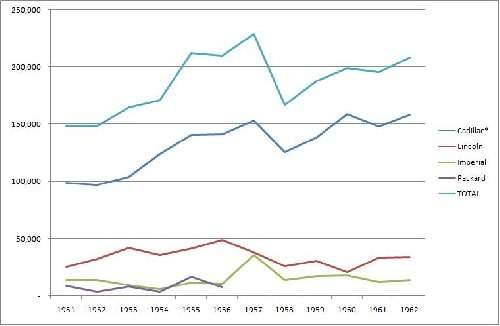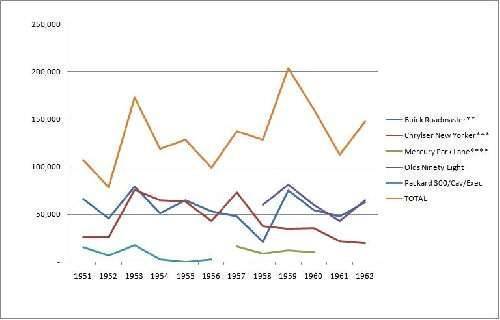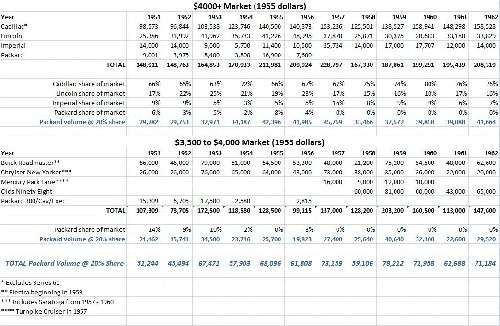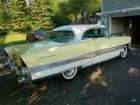|
Re: Would it have been easier to salvage Packard than Studebaker?
|
||||
|---|---|---|---|---|
|
Home away from home

|
I threw some data from the Standard Catalog of American Cars into a spreadsheet to see the sales numbers from 1951-1962. The reason that I posted the concurrent "1955-57 Line-Up What-if" thread is that I had looked earlier at each competitor and got the impression that there was an opportunity for Packard to shift to the luxury and near-luxury market in 1955 and with the right car, to have gotten on a survival path that would have included the 1958 redesign and beyond. Now that I see the data in chart and graph form, am even more convinced.
Some observations: 1) The luxury market did not collapse in 1954, Packard collapsed. 2) the luxury market took a hit in 1958/59 but it was not a complete collapse, and bounced back nicely during the early 60s despite the compact car boom. From there it only grew larger. 3) The near-luxury market ($3,500 - $4,000 in 1955 dollars) jumped up and down quite a bit because players were entering and exiting constantly (and because I chose an arbitrary cut-ff) but overall, the trend was up and the market was significant. 4) Had Packard captured 20% of each of these two markets, and generated higher margins than the Clipper, they could have survived either as an Independent or an attractive merger partner with AMC or even Chrylser, given the lackluster Imperial sales. Some may ask, why bother trying to figure out if Packard could have survived? I have a personal reason: it's good training in case the opportunity ever arises to run a company or do anything that involves strategic planning. Plus of course, I love the cars. Paul
Posted on: 2010/11/24 15:28
|
|||
|
||||
|
Re: Would it have been easier to salvage Packard than Studebaker?
|
||||
|---|---|---|---|---|
|
Forum Ambassador
|
Interesting research. I don't think Packard ever had more than 5 or so% even back in the day of the three P's. Packard made some miscues post war, no question. A couple of threads are here early on about some of the reasons why but believe stodgy styling vs the Earl machine and lack of or quality of dealerships were the main ones.
Pre 55, Packard really was conservative. They catered to the older person who really wasn't into flash while Cadillac and to some extent the others was going the opposite and attracting younger buyers or those who wanted to be or thought they were. Seem to recall that Cad also had some very aggressive pricing as well and could make relatively small profit because they had the other divisions to carry the load. Dealerships were an issue Nance tried to tackle almost as soon as he arrived. Many were run down, or had multiple makes & pushed those they might see more profit on. Believe one of his memo's on the subject said they didn't deal and would only settle on list price while the Cad or Lincoln guy would do whatever it took to move the merchandise. Location was another. I grew up in a rather sparsely populated area. Lincoln, Imperial was represented in the small town, Cadillac maybe an hour away but Packard was 2-3 hrs away and that probably was the norm for them in more than one area.
Posted on: 2010/11/24 15:53
|
|||
|
Howard
|
||||
|
||||
|
Re: Would it have been easier to salvage Packard than Studebaker?
|
||||
|---|---|---|---|---|
|
Home away from home
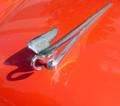
|
When looking at raw statistics, it's easy to say that all Packard had to do was capture 20% of the luxury and near-luxury market and they would've "hung-on" longer. Unfortunately, such a statement overlooks the fact that the luxury market for consumer products (including autos)is especially fickle. By the 1950's style-makers and trendsetters weren't buying Packards; office managers and insurance salesmen were buying Packards and the noveau riche of the mid-century weren't looking to these working-stiffs in gray, flannel suits as the trendsetters. Tastes had changed and only one name fit the bill: Cadillac.
The car en vogue in the 50's were Cadillacs. Did it make sense? Some would argue in the affirmative, others would sneer that they were all flash and excess. But, regardless of their aesthetic merits, Hollywood stars, athletes, and politicians all drove them. They showed up in movies and TV shows. Heck, I even have a piggy bank emblazoned with the words "for my Cadillac" across its fat belly. Sadly, Packards had simply fallen from favor and nobody was filling piggy banks "for my Packard." Packard could've rolled out the most beautiful, luxurious vehicle ever put on four wheels and it wouldn't have sold. Look at the Carribbean. It's an Eldorado killer for sure, but in terms of sales, it just didn't get enough looks from the right crowd to sell. This, of course, is not a unique story. The "Standard of the World" is lucky to be around in 2010. Why? Because, like Packard coming into the post-war years, by the end of the 20th century Cadillac was no longer coveted by the well heeled and was rapidly losing sales to the German luxo-manufacturers. By the 90's, Mercedes-Benz and BMW had surpassed Cadillac as the luxury-cars to have for those trying to make a statement with their wheels. Cadillac's offerings were surely just as luxurious but nobody cared because it was no longer 'cool' to be seen in a Cadillac; you had arrived only when you pulled up in your Benz/Bimmer. I know that these what-if discussions have to look at the available emperical evidence. However, doing so without acknowledging the human fickleness that often drives the luxury markets only leads to incomplete answers. One other thought...so what if Packard, once the most beautiful, well engineered and coveted car in the world had survived? Well, by 1968, thanks to the Feds, it would've had side-marker lights plastered all over it. Big Gov. would've hit it again in 1974 and hung massive bumpers off of its luxuriously sculpted sides. Somewhere in the same decade, disco-era taste would've insisted that vinyl tops be stretched around its opera windows. By the 1980's Washington would've made sure that the poor thing drag around its now-plasticized 5mph bumpers with an underpowered V8 built to satisfy CAFE standards. Then, somewhere in the decade of the 90's whatever was left would've been hit with gas-guzzling taxes and, let's face it, somewhere a Packard SUV would've shown up. As icing on the cake, its likely that by 2008, some suit representing this modern Packard would've been found roaming the halls of Congress grovelling for tax-payer money to keep what remained of this once proud marque afloat. I don't know about you, but I'm kind of glad Packard faded into history when car-guys were still in charge of making cars and the buying public was still ultimately responsible for what sold in the marketplace.
Posted on: 2010/11/24 19:34
|
|||
|
||||
|
Re: Would it have been easier to salvage Packard than Studebaker?
|
||||
|---|---|---|---|---|
|
Home away from home

|
Packard handed the luxury car market to Cadillac on a silver platter. From the mid thirties on Packard's big concern was the medium price market and the senior models were an afterthought.
Posted on: 2010/11/24 19:42
|
|||
|
||||
|
Re: Would it have been easier to salvage Packard than Studebaker?
|
||||
|---|---|---|---|---|
|
Home away from home

|
True, and that's one reason the style-makers moved on to greener fields. Nevertheless, I think the shift was probably inevitable as the post-war generation of luxury buyers identified Packards as old-money and were redefining what luxury meant throughout the consumer markets.
Just out of curiosity, did the 30's idea of a semi-custom "senior" car really make it into the 50's? Other than the Continental Mark II, most 'luxury cars' of the period came off mass-production lines, didn't they?
Posted on: 2010/11/24 20:13
|
|||
|
||||
|
Re: Would it have been easier to salvage Packard than Studebaker?
|
||||
|---|---|---|---|---|
|
Home away from home

|
Yes, and rightly so. Mass production of the "fine car" had been the way to go since a number of years before the war but Packard was slow to figure it out, which was ironic given that Macauley was a big proponent of production efficiencies. In the Twenties these helped his company make tons of money. And Packard was also a style leader through the Twenties and into the Thirties. Rich people aren't blind, they like a nice looking car just like the next guy.
Macauley didn't get the Seniors onto the Junior line soon enough and didn't pick up on the latest design trends, those were perhaps his only big mistakes. He probably should have done all this in 1938 instead of spending money on an IFS for the Seniors. That and what was spent on the 110 could have paid for a new 1938 Super Eight with a new 356, under a hood 5 inches longer hood than the 120. Lower height and 3-box torpedo sedan styling would have rounded out the plan and put Packard right there with Cadillac. But this is fodder for another thread... Someone in a distant forum, I think it was the good Peter Hartmann, said that in 1955 the public was ready to believe in Packard again. My gut says the same thing. Packard wasn't Lincoln or Imperial. It had a richer history and meant more to the public. Feelings might have fallen dormant but they were still there. The data says Packard jumped in market share from 2% to 8% from '54 to '55. A 400% increase. With a still tall body, 4 year old body shell, late launch and quality issues everywhere. So yes, I think they could have jumped to 20% with a lower car that was exquisitely and hotly styled and built to Packard's traditional standards. And I think they could have sustained the gains by pounding away at a better marketing message and with a follow-up home run in 1958. The dealer issue, big town or small, might have been rooted in the product too. Put out a hot product and the American entrepreneur will want to hitch his plow to it. And once he became profitable selling Packard, the company could have imposed higher standards to support the new upscale image. But let's say small town America still had limited access to Packard. Maybe Nance should have asked "what would Alvan have done?" How did Packard move the metal in the Twenties? Did they have more rural dealers back then? If so, how did they get them? If not, how did the company get so darn rich? I reposted the data to include Lincoln and Imperial market share. One can see movement when new designs came out. Imperial jumped from 5% to 16% from 1956 to 1957 and the '56 Imperial was no dog to start with, so big gains were possible back then.
Posted on: 2010/11/24 22:13
|
|||
|
||||
|
Re: Would it have been easier to salvage Packard than Studebaker?
|
||||
|---|---|---|---|---|
|
Home away from home

|
Quote:
I don't believe luxury buyers are like the 'next guy.' Their priorities are far different and a good looking car (or watch, or condo at the beach, etc.) isn't enough. Yes, for a certain generation of luxury buyer Packard's styling may have been the initial draw but by the 50's a new generation was defining luxury in terms of flash and excess (excess size, excess chrome, excess power...you get the drift.). Similarly, current luxury car shoppers seem to be after driving manner and precision build characteristics. Hence, the Germans are now handily capturing the luxury market. Regardless, the luxury market of the mid-century considered Packard passe' just like today's luxury market has moved away from Cadillac leaving it to flounder. Quote:
Maybe true in theory but it never would've happened in practice. Remember, 1937-38 saw an ugly dip in the Depression-era economy. I'm sure Mr. McCauley's first priority was protecting the company's cash reserves and keeping the Packard from ending up on the Depression's ever-growing scrap heap of independent makes. And, as for keeping up with Cadillac in terms of style, the '41 Clipper made everything then on the market look out-of-date. Unfortunately the War then intervened and and wiped out what could've given Packard a huge advantage in terms of contemporary styling. Quote:
I quite agree but history shows us that rich traditions don't sell cars. Studebaker had been around since the 1860's and probably had a richer corporate history than any make, but it didn't help them sell any cars in the 50's. More recently, one of the oldest marques in the US, Oldsmobile, disappeared despite a 100 year history and a formerly very large and loyal following (I believe it was the number 3 best selling make as recently as the late 1970's). Quote:
Others on this site might have a better insight on this than I, but I believe that a majority of Packard agencies in the 1920's were located in urban areas of the country as this is where the wealthy were found. It wasn't until Packard moved downmarket that locating dealers in less affluent (i.e. rural) communities became an issue. Oh well, "what if's" are fun to kick around and this is an interesting thread but we could discuss this until we're all 'blue in the face' and the conversation will always be post mortem. But, like the good Dr. Pangloss often reminded Candide, "everything happens for the best in this best of all possible worlds!"
Posted on: 2010/11/25 1:49
|
|||
|
||||
|
Re: Would it have been easier to salvage Packard than Studebaker?
|
||||
|---|---|---|---|---|
|
Home away from home

|
Yikes! Sorry for long thread. A loaded topic indeed. Hope everyone had a Happy Thanksgiving.
excess size, excess chrome, excess power... Packard and the others played the "excess" game in their day and buyers loved it. Look at 1930. Long hoods, chrome radiator shields, extra lights, fancy horns, dual side mounts, dual rear mounts, chrome wire wheels, chrome disc wheels, luggage racks, two tone paints in eye-opening hues. And that was just Packard! Throw in the V16s, V12s, DOHC I8s, Supercharged DOHC I8s, boat tails, rear compartment bars, velour, silk, tapestry, mahongony, ad infinitum and it doesn't seem like a very staid crowd at all. Look at their houses. Wretched excess times 10! Ornate stone and woodwork, 20 bedrooms, pools, spas, gargoyles... I know a lot has been written about the so-called conservative clientele of the golden age but I just don't see any evidence that they were any more conservative than the Leave It To Beaver, Ike generation. Which would make sense. People are people. Regarding the fate of Packard and later Cadillac... as the product goes, so goes the image. They didn't maintain their product post-war like they should have. Packard started slipping, IMHO, beginning in 1938. The sales data on this is very clear. The underlying reasons aren't but I believe it had to do with market positioning and styling. 1937-38 saw an ugly dip in the Depression... The product planning time frame that I am referring to is 1935-36 when the economy and Packard One Twenty sales were rebounding and Alvan Macauley was on a spending binge. That's when the company created its "5 Year Plan". I would argue that Alvan went too far down in the market with the 110, spent too much on an aging Senior platform in 1937 and was too slow to buy into the proposition, in fact the outright necessity, that the Seniors needed to come off the Junior line and could be done so while still maintaining Packard's fine standards.. Nor could he or his design team comprehend the need for a lower car. Over at Cadillac it was a completely different dynamic. First the lower cost V8, then the lower 60 Special. A combo that handily outsold its Cadillac brethren and completely defied the defeated '38 market. Packard was 3-1/2 years late with the Clipper. Nor did the car erase all sins. It was a great design and the market rewarded it. And the 1941 Cadillacs were a great design and the market rewarded them too. I attached some imagery that I have created through the years to try to map out a possible design and platform path for Packard's seniors beginning in 1935. It's a work in progress but I find it both helpful and entertaining. The history is very clear on what happened between 1938 and 1958. The touring sedan morphed into the now common 3-box style (a la the 60 Special), cars got lower and wider, and luxury car production adopted mass production techniques. In all these areas, GM often led while Packard often lagged. Explanation of the images: 1935-37 Packard's first opportunity to test the torpedo sedan waters. Duesy's Twenty Grand and Packard's own Car of the Dome contained the primary elements back in 1933: torpedo sedan, integrated trunk, split windshield. Could have been a somewhat lower volume addition to the line-up but an attention getter. 1938-40 In late 1935 when Packard's planning for 1938 was commencing, Cord was dazzling the market with a super low car and Lincoln demonstrated a RWD car (Zephyr) with a fairly low floor and a trans hump. At the same time, Packard's Seniors were at the end of the line in terms of weight, body construction and manufacturing, and weren't very profitable. Would the market for fine cars return? I would argue that it didn't matter, Packard's traditional fine cars were fast becoming outdated. As Packard looked ahead to 1938, they were planning to make a big investment in all-steel bodies that would lock their styling and proportions in for years. Why not make it advanced? Why not get the Seniors on the same line? The money spent on the '37 110 as well as the '37 Senior chassis and '38 Senior pontoons could have easily paid for a new, lower 282 Eight and longer hooded (5 inches) 356 Super Eight pulled ahead 2 years. Dietrich had given Packard a series of renderings depicting a great looking 3-box profile, so that suggestion had been planted. I tried to show how such a car might have looked in Super Eight form. (have also created images of a full '38 line-up, if any interest) 1941 Clipper with traditional grill and no running boards. Details have already been discussed in a recent thread. 1949 Great opportunity to do a new model for the 50th Anniversary. I don't know what it should or could have looked like... vertical grill?, straight-through sides? Anyone want to take a stab at it?? I show the 200 stretched 5 inches to depict a 400 with a more formal c-pillar. A freshening of the would-be '49 in '52 could have held Packard over until '55. 1955 Recently discussed this in another thread. 1958 Have no image to show other than a lower version of the '55 image. We've already discussed the many opportunities. BTW, I liked your post on the would-be Packard of the 70s and 80s. Had they followed the Big 3, a quite likely scenario. Had they charted their own course, a number of alternatives could have played out, some good.
Posted on: 2010/11/28 22:36
|
|||
|
||||
|
Re: Would it have been easier to salvage Packard than Studebaker?
|
||||
|---|---|---|---|---|
|
Home away from home

|
I had a Packard in 1960. One reason I got it at a very attractive price was that Packards were notorious rust bombs. When I wen looking, I also looked at straight eights; it was impossible to find solid rocker panels.
I post this because, as we get involved in predictions and what ifs, I think we forget the dynamics that were at work in the day. Obviously rust was far from the only factor, but it was far more important then than now.......
Posted on: 2010/11/29 6:33
|
|||
|
When two men ride the same horse, one has to be in the back...
|
||||
|
||||

 (25.94 KB)
(25.94 KB)